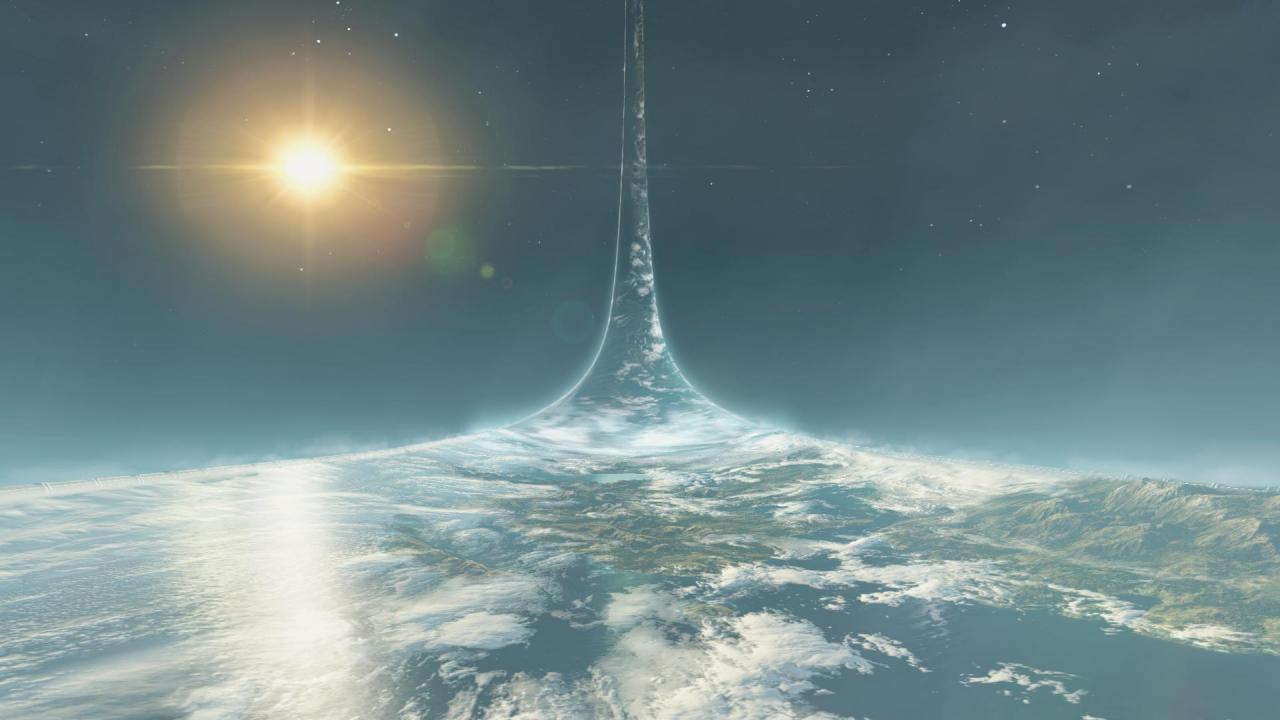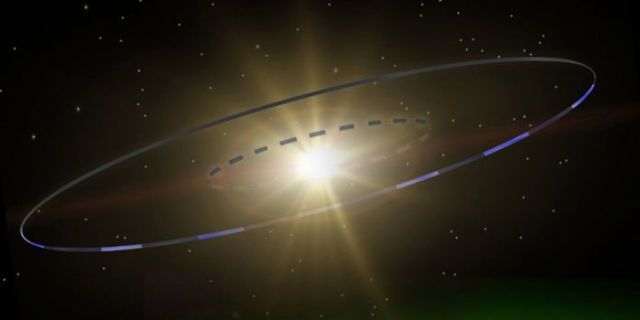"Impossible" Technologies #1: Ringworlds
Do you sometimes feel like there just isn’t enough space for the human population on Earth? What if there was a place where you could give each person on Earth an entire continent the size of North America all to themselves - and still have room to spare?
Welcome to my “Impossible” Technologies series, with "impossible” in quotations because although what you’ll find here will, in most cases, be considered solely possible in fiction, I’m here to determine just how fictitious these technological concepts are.
The first target in my crosshairs is one of my favorite technological concepts: the ringworld. Coined by Larry Niven in his 1970 novel of the same name, a ringworld is an artificial structure designed to provide Earth-like living conditions around a star. In Ringworld, this construct is nearly a million miles wide and approximately has a diameter of Earth’s orbit: about 600 million miles in circumference. These numbers are daunting, but that’s nothing compared to what this all translates into when compared to the area of our Earth. Because this artificial world is so wide and orbits a sun-like star from about Earth’s orbit, there is a total of 300 million Earth’s worth of surface area.
Need more help appreciating this? The video below might be enough to make your mind melt and leave you feeling very insignificant.
Sadly, this is not from a TV or movie adaptation of Ringworld.
The ringworld in… Ringworld
In Niven’s novel, the core material that makes the construction of its ringworld a reality is scrith, described as “a milky-gray translucent, nearly frictionless material.” It has characteristics which allows it to perform many feats of engineering which would be impossible by our present-day standards. For example, scrith has a tensile strength (how resistant a material is to breaking under tension) comparable to the strong nuclear force, effectively making it almost impossible for it to break apart under its own weight or by other forces, such as gravity.
Scrith is used for the walls (1000 miles high) and floor (just 3300 feet thick - razor-thin when you consider the total size) of the ringworld.
This alone places scrith in “unobtanium” territory as far as tropes in fiction goes. There are no known materials like scrith in nature - or anything remotely as strong for that matter. Based on the series in which Ringworld is a part (the Known Space universe), the method by which scrith is manufactured is completely left open-ended. Similarly, the main characters in Ringworld can only speculate as to why it exists in the first place, with no firm answers given or discovered throughout the novel.
Are Ringworlds Possible?
A ringworld would fall into the category of a theoretical “megastructure” - a very large, artificial structure which could not be constructed with today’s technology. It’s safe to say that there are MANY constraints that would make our being able to construct a ringworld almost impossible.
The obvious would be the sheer volume of resources needed for such a construction project. The characters in Ringworld speculate that it would have required the total mass of all the planets in its solar system to build. To put it another way: literally taking apart/syphon away/deconstruct every planet, asteroid, gas giant, and moon would be a requirement.
(Fun fact: the total mass of all planets, asteroids, and the Oort Cloud equals 2.7x10^27 kg - about 455 Earth masses. The sun has a mass of 1.99x10^30 kg - about 333,000 Earths.)
However, even if we found a way to break apart everything in our solar system to construction materials, there is another really big problem (“really big problem” might be a recurring phrase in this series…). A second book by Niven, The Ringworld Engineers, the ringworld spins around its star at about 770 miles/second (~1200km/s), the velocity necessary to simulate a surface gravity that approximates Earth. The ringworld didn’t just begin spinning on its own - it had to be manually spun up. In this book, it’s explained that it took about 20 Jupiter masses worth of energy to bring the ringworld up to the aforementioned velocity. Twenty Jupiter masses!
Remember that fun fact? Well, of the 455 Earth masses that comprise the sum total of all non-star mass in our solar system, 318 of it is from Jupiter. Therefore, on top of needing all the non-star mass in our solar system we would also require another 20 Jupiters worth of energy (6360 Earth masses) to guarantee the thing has centrifugal force.
Another big problem - something that was somewhat handled across multiple books in the Known Space series - is the issue of the star itself. To summarize the issue: stars are not stationary objects in space; therefore, any ringworld would have to constantly adjust its position in space to account for its star’s orbit around its galactic center or else it will find its own mass being attracted to the larger mass in its center: the star. This attraction has to be counteracted, and the solution Niven presented was the use of thrusters on the outside of the ringworld. This particular issue received TONS of review from physicists around the world since Ringworld’s publication, with most in the community certain that without further artificial intervention, ALL ringworlds would fail.
Smaller is Better
Though ringworlds may be more than one foot into the “impossible technology” category, that doesn’t mean the idea isn’t scalable. In fact, there are two smaller-scale structures which could, in theory, be constructed by humanity. Though the costs would still be prohibitively high, the technological requirements for them are pretty much in the realm of reality.
O’Neill Cylinder - a space colony comprised of two counter-rotating cylinders attached to each other. These cylinders, as proposed by Gerard K. O’Neill, would be 5 miles in diameter and 20 miles long. They would rotate to generate artificial gravity, allowing people comfortable living conditions within them. These cylinders would be sealed off from space, allowing an atmosphere to be supported.
Bishop Ring - think of it as a much, much smaller version of the ringworld. In this case, a Bishop Ring would not have a star in its center, but act as its own space colony, stationed in deep space, using the gravitational forces of the sun and another planet to give it a stable orbit. These rings can be as small as a few miles in diameter, or be constructed around Earth. Either way, the volume of resources necessary to construct a Bishop Ring are not only within our grasp, but technically doable.
Despite ringworlds being more fantastical than real, that doesn’t mean it cannot be possible. Given the vastness of the universe and just how little we potentially know on a cosmological scale, it may be that our scrith is waiting for us just beyond the next theorem.
Notable Books with ringworlds or similar constructs:
Rendezvous with Rama, by Arthur C. Clarke
Consider Phlebas, by Iain M. Banks






